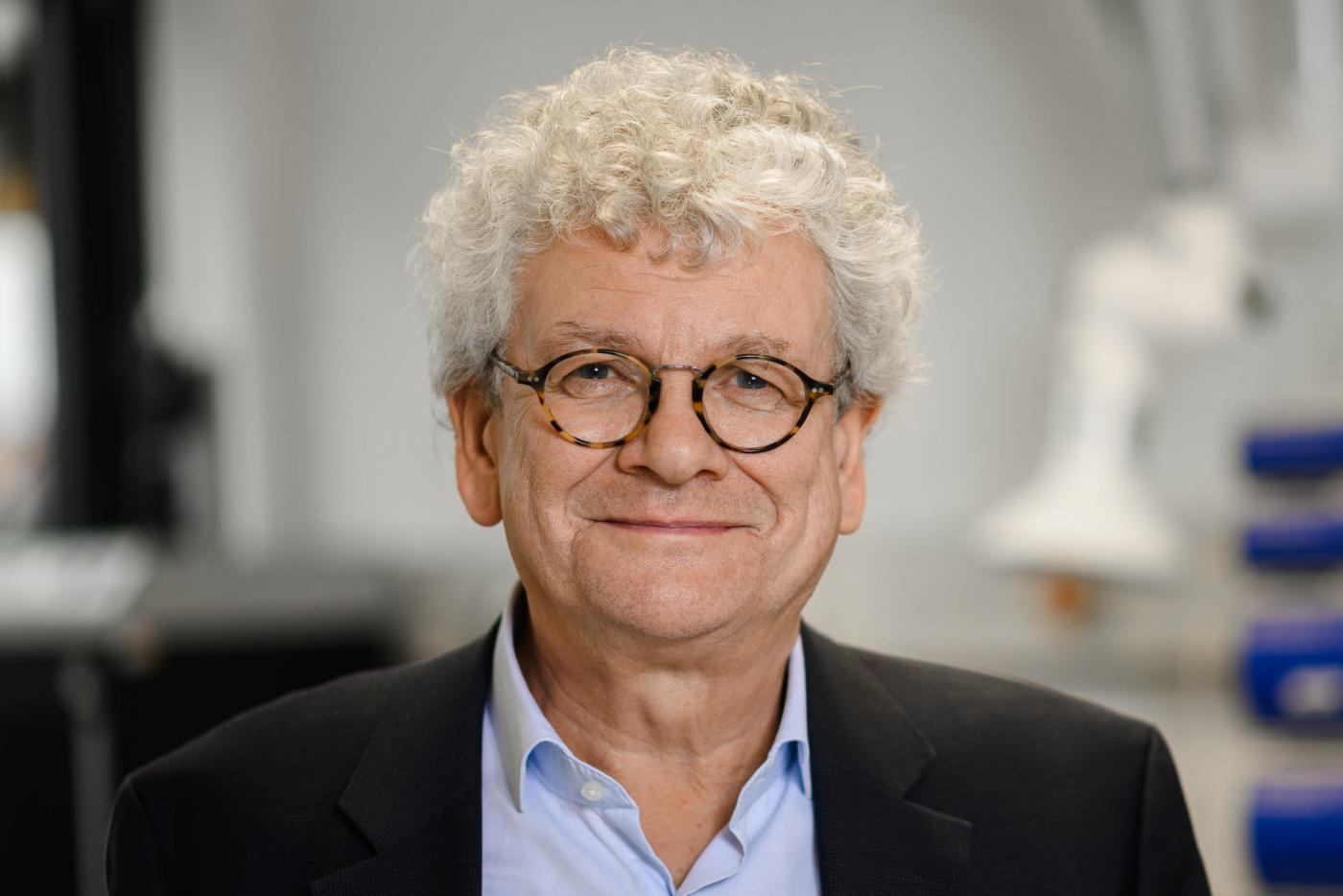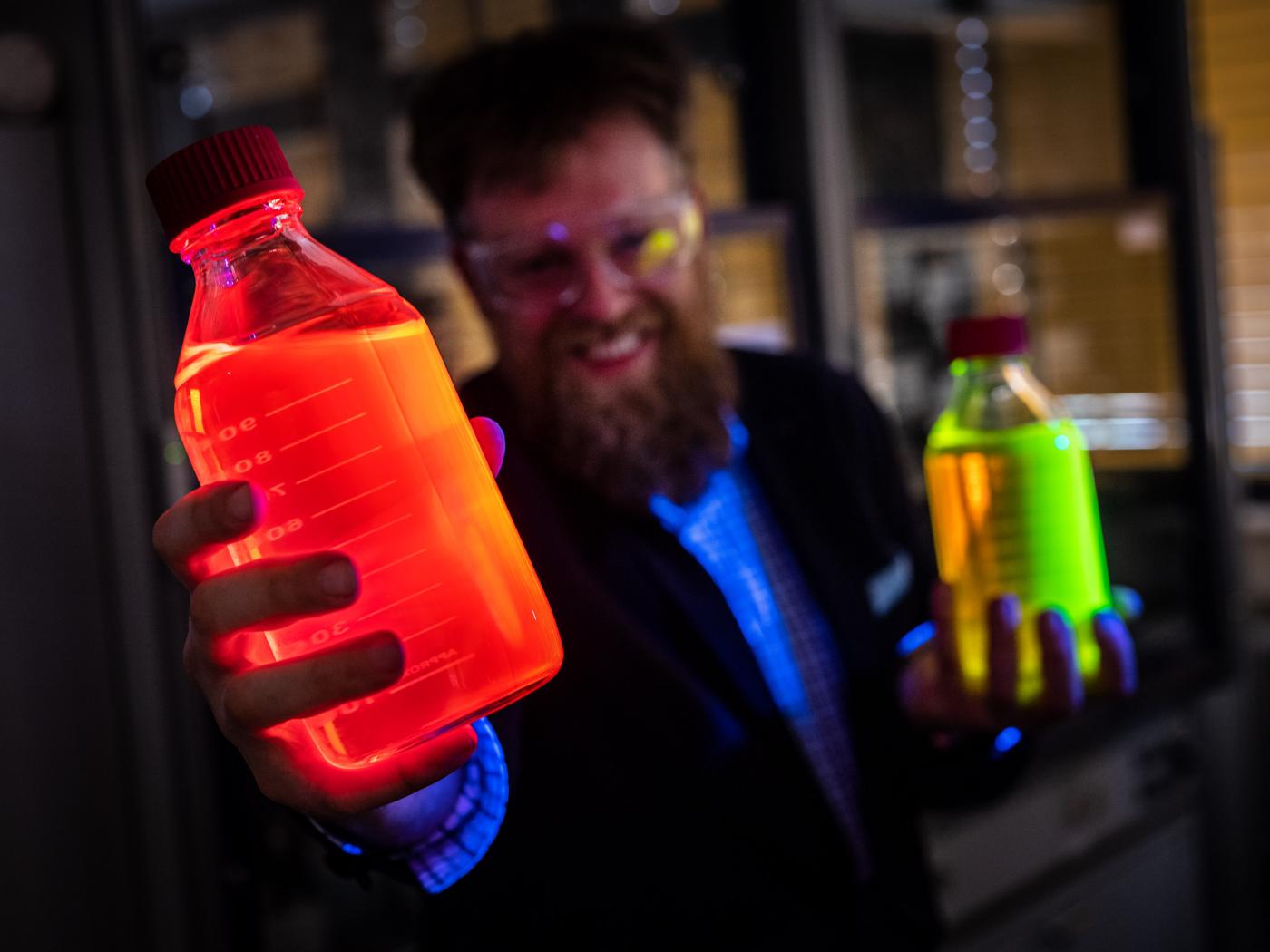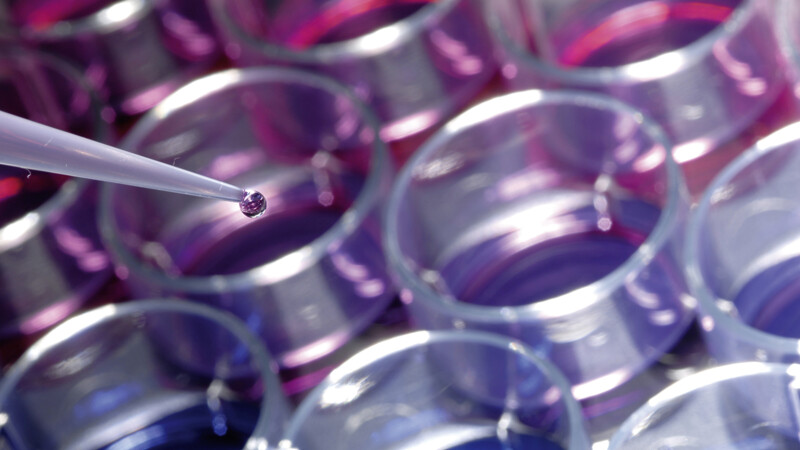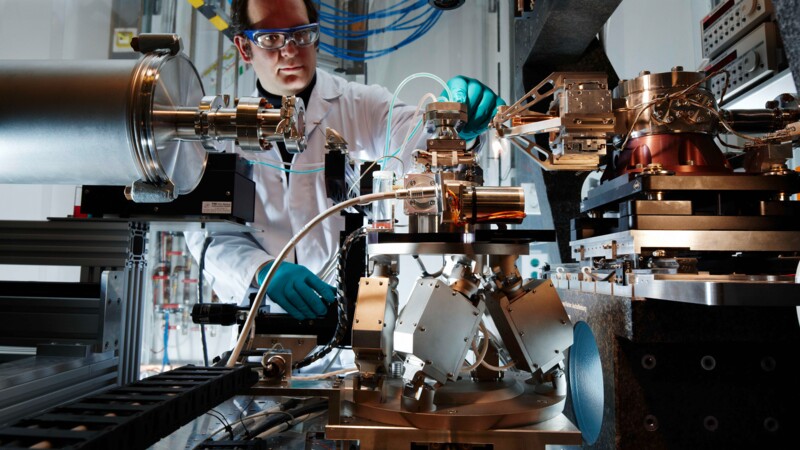Nanoparticles correspond to one millionth of a millimetre or the diameter of a human hair, which is 50,000 times larger. A nanoparticle is about as small as a football is to the planet Earth. The physical and chemical properties of materials change and this allows for all kinds of new kinds of products and applications. "Basic research at IAP CAN is transferred into practical applications," said Weller.
Nanotechnology facilitates all kinds of brand new applications and existing products such as COVID-19 rapid tests can be made safer. The protein structures of SARS-CoV-2 are detected in the antigen tests. "This detection can become even more reliable with fluorescent nanoparticles. We are currently developing such an improved test," said Professor Horst Weller, Director of the Fraunhofer Centre for Applied Nanotechnology (CAN), which is a division of the Fraunhofer IAP (IAP CAN). Weller researches nanoparticles in medicine, modern imaging methods using nanoscopic markers, nanoparticles for solar cells in electrocatalysis and sensor technology and in highly stressed materials at the Department of Chemistry at the University of Hamburg.
Nanoparticles - diameter of a human hair

Nanotechnology in medicine
Nanotechnology can help diagnose diseases earlier or transport active substances more precisely. "The human organism is a master of transporting vital substances such as fats or oxygen, but also at fighting off foreign bodies," Weller pointed out. If a substance is not transported by the body's own system, it is marked and fought by the immune system. That makes medical therapy approaches far tougher. "Nanotechnology has had initial successes there e.g., in battling tumours, where a chemical mace is frequently used to attack healthy and diseased cells. Nanoparticles will help make the application far more precise in future."
Nanotechnology in consumer goods
The use of nanotechnology can also be fun. Nano-crystals made of semiconductor materials or so-called quantum dots make for brilliant TV images. Quantum dots can absorb and emit light and produce a very pure, solid colour depending on the size of its nucleus. Some materials with a nucleus of 2 nm emits blue light; red is produced when the nucleus is 6 to 7 nm in size. "The primary colours blue, green and red can be displayed really clearly and separate from each other, which allows for high resolution, good quality mixed colours," Weller pointed out. The quantum dots are produced and filled into bottles. They are then embedded in a plastic film on a display.

Improvements and cost reduction
Nanoparticle systems have special properties. They can be magnetic, electrically conductive, fluorescent or catalytically active, which makes them interesting for many different fields e.g., for cost reasons in material sciences as the catalytic properties of metallic nanoparticles are important for producing hydrogen and its use in fuel cells. "Expensive materials such as platinum are used in catalysts and nanoparticles allow for a significantly reduced use of materials. Real pioneering work has been done in another materials science area in Hamburg," Weller noted.
In the 1990s, Weller's team of researchers optimised nanocrystals for solar cells for the first time. Meanwhile, this has become a major field of global research. “The knowledge gained in this way has made a vital contribution to understanding the opto-electronic properties of customised nanostructures." And how is Hamburg as a centre of science positioned in terms of the technology's future? "Extremely well. Hamburg is one of the world's leading nanoscience centres."
ys/kk/pb
Sources and further information
Founded in 2005, CAN GmbH is a public private partnership between the City of Hamburg, the University of Hamburg, and notable industrial enterprises, all of which joined forces to form a support association. Its members include Beiersdorf AG, Eppendorf AG, Merck KGaA, Bode Chemie GmbH and DESY and the Chamber of Commerce Hamburg and Hamburg Savings Bank. The Fraunhofer CAN has been a research division of the Fraunhofer IAP since January 1, 2018. Around 70 researchers i.e., 35 at IAP CAN, 35 at the University of Hamburg are now focusing on the technology of the future led by Professor Horst Weller:
More
Similar articles

IKS celebrating tenth anniversary - centre driving future issues

Internationally renowned research from coronavirus to big data

